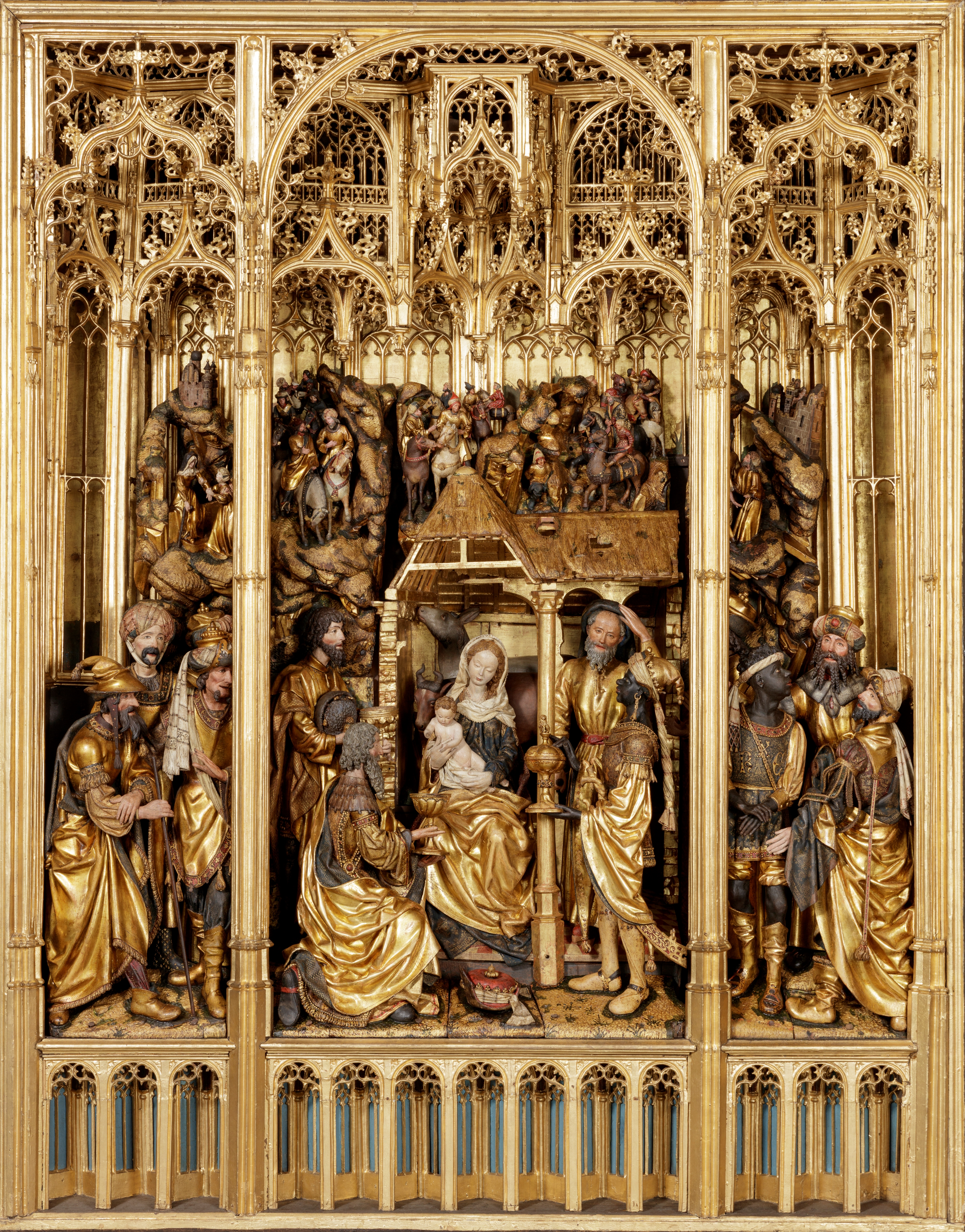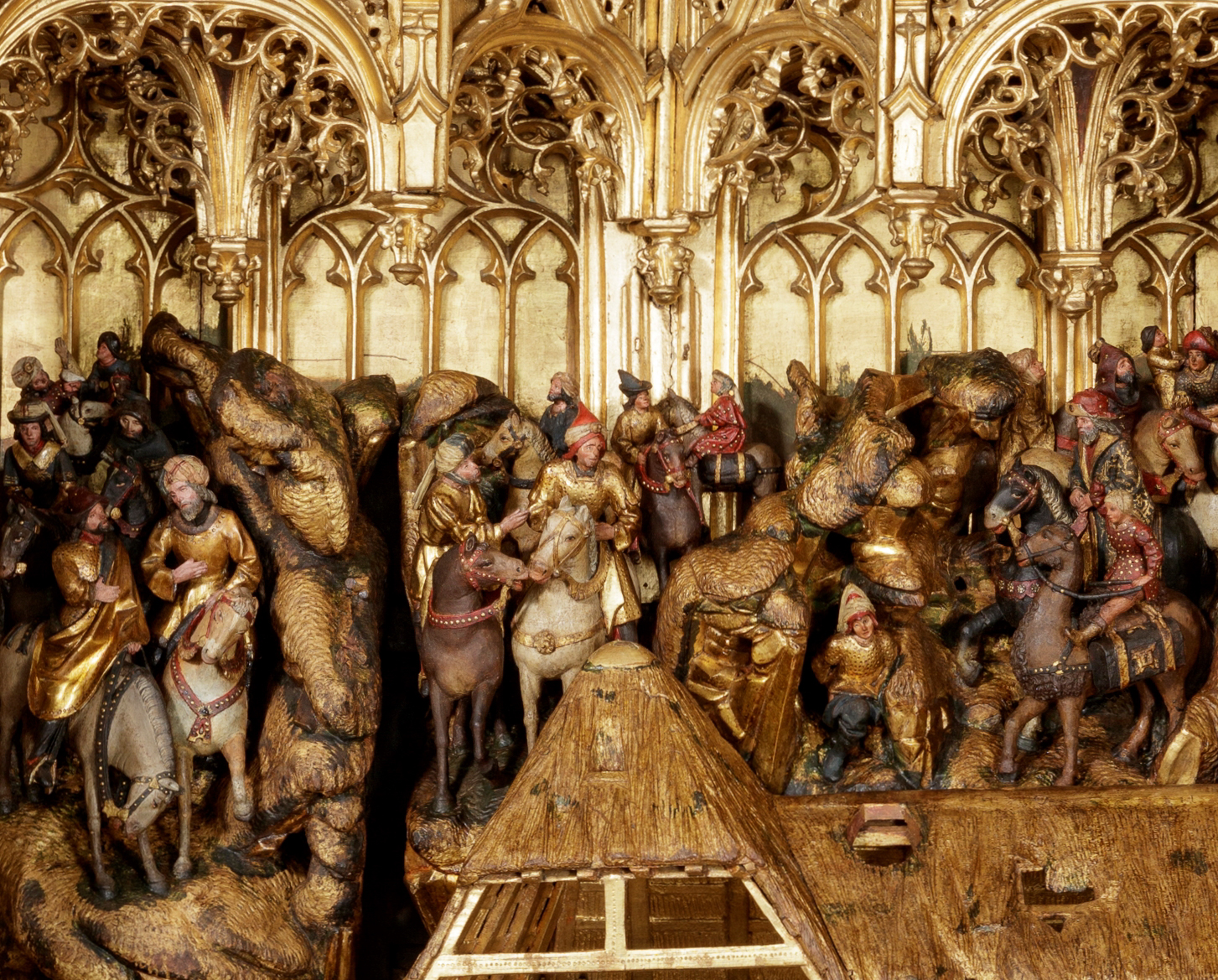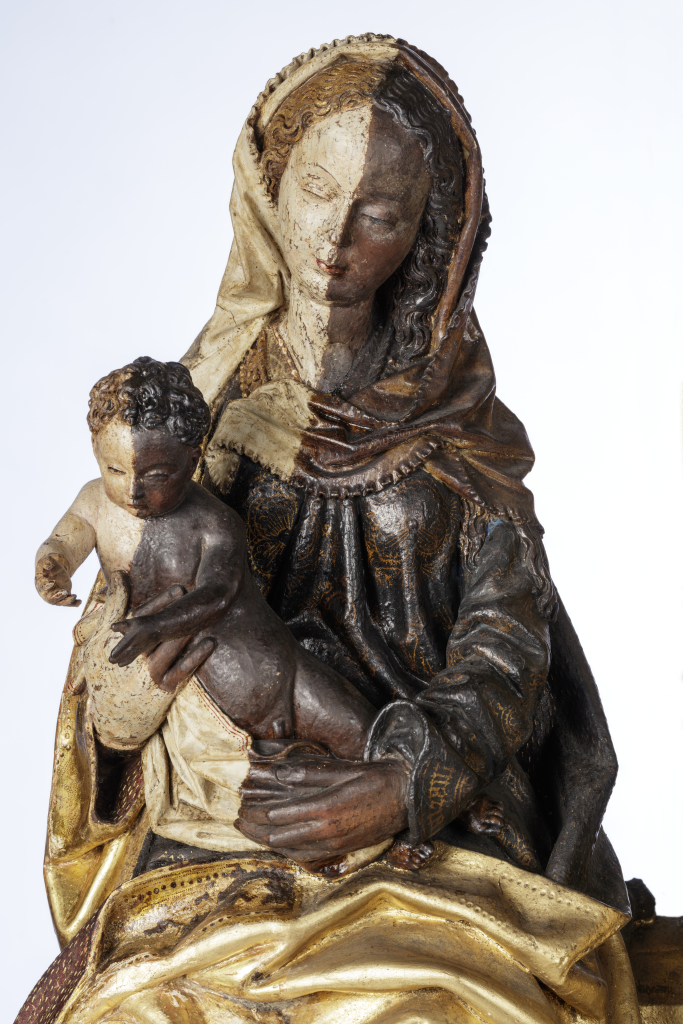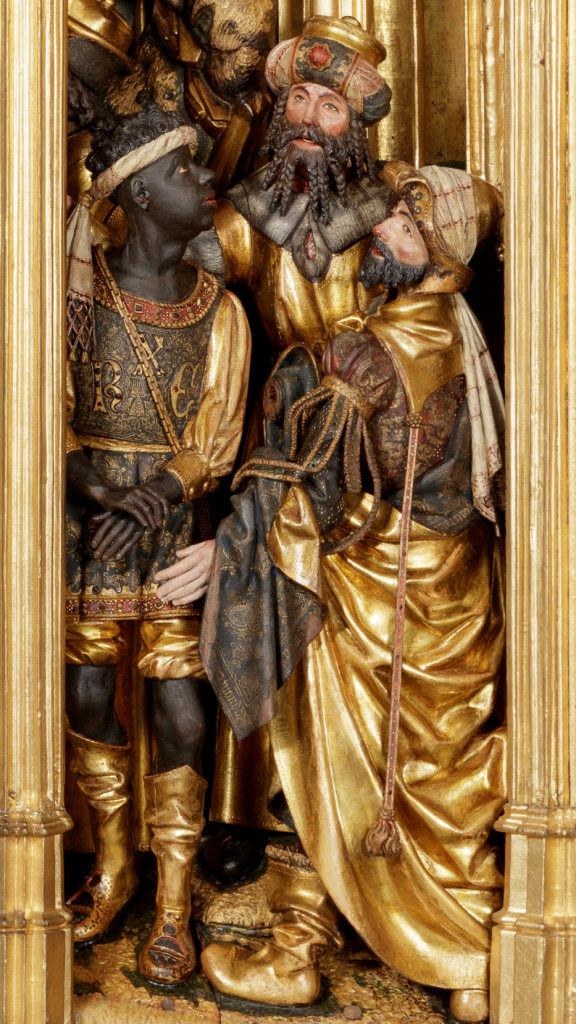For centuries, the Basilica of the Holy Apostles and Nazaro Maggiore in Milan has been home to a truly unique Flemish masterpiece, hidden beneath layers of brown varnish, dust, and a misleading attribution to an artist of German origin. This is the Altarpiece of the Magi by Jan II Borman (circa 1460 – 1520), a grandiose altar piece featuring an oak wood case containing finely painted and decorated sculptures and high reliefs. The work depicts a grand scene dedicated to the Epiphany, framed within a structure crowned by exquisite golden arches reminiscent of a Gothic church’s interior. In the center foreground, the Holy Family is surrounded by the Magi, who adore the Child. Each figure is distinct in their poses, costumes, and attributes. In the upper part, in the background, a rocky landscape unfolds, dotted with countless smaller yet equally defined figures, representing the procession that has come to witness the miraculous event. The Altarpiece of the Magi was acquired or commissioned from Jan II Borman by the wealthy Milanese glass and metal merchant, Protasio Bonsignori da Busto, for his chapel in the Oratory of Santa Caterina, which is part of the Basilica of the Holy Apostles and Nazaro Maggiore. The chapel’s altar, built by Protasio around 1510, was dedicated to the Magi, whose journey to offer gifts could be a nod to the merchant’s long business trips.

Despite going unnoticed by many, the Altarpiece of the Magi caught the eye of Myriam Serck, Director Emeritus of the Institut Royal du Patrimoine Artistique in Brussels (explore here IRPA’s website). During a visit to the Milanese church, she immediately recognized the precious object’s style and high-quality execution, tracing it back to the workshop of Jan II Borman. The discovery sparked interest in this previously unknown work, leading to a project to study and restore it. After preliminary studies and years of negotiations, and with the support of Milanese art dealer Alessandro Cesati, who mediated with the Milan Superintendency, the Altarpiece was shipped to Belgium, where it remained for two years (2022-2023) at the IRPA.

Thanks to the meticulous restoration, supported by the Fondation Roi Baudouin, the Fondation Périer-d’Ieteren, and Intesa Sanpaolo, the Retablo has been restored to its original splendor. The wood analysis and discovery of the sculptor’s mark have confirmed Myriam Serck’s brilliant intuition about its origin from the Brussels area and its connection to the Borman workshop. This has allowed us to date the work to between the late 15th and early 16th centuries. Upon removing the layers of brown varnish and the nineteenth-century gilding, the polychrome, the mission gilding, and all the precious decorative techniques used (punching and relief brocade applications, gilded metal elements, and resin and wax pearls) resurfaced. This makes the Altarpiece of San Nazaro the only known example from this renowned workshop that has retained its original polychrome and decorative elements. This is truly remarkable, considering that the vast majority of preserved 15th-16th century Nordic wooden sculptures have lost their color. In the 19th century, it was common practice to cover or even remove polychromy, as in this case, as it was considered out of step with the era’s taste. This led to its inevitable loss.

The restoration of the Altsrpiece of the Magi was not merely a conservation effort, but also an unprecedented initiative to enhance the Italian cultural heritage. It’s truly remarkable that a Belgian institution has invested time, effort, and resources in restoring an object that is not in the property of a local institution, solely for the joy of closely examining and studying a rare artistic testament to Belgian culture. However, this aligns perfectly with IRPA’s mission, which primarily aims to study and understand Belgium’s cultural heritage, ensuring its optimal preservation for future generations. This entire affair highlights how cooperation between different countries, united by a common goal of safeguarding and enhancing heritage, can lead to actions of extraordinary cultural significance.

After returning to Italy to be presented to the public at the Carlo Maria Martini Diocesan Museum in Milan, the Altarpiece of the Magi by Jan II Borman will return to its original location in 2026, following its appearance at the ‘Restitutions’ exhibition, which will begin at the end of September 2025 and is expected to be held in Rome. Paola Strada, an official of the Milan Superintendency, explains: ‘In addition to Belgian funds, Intesa Sanpaolo is among the financiers, making this intervention part of their ‘Restitutions’ project in the area.’ Here’s the link to the project’s website.
3 January 2025


